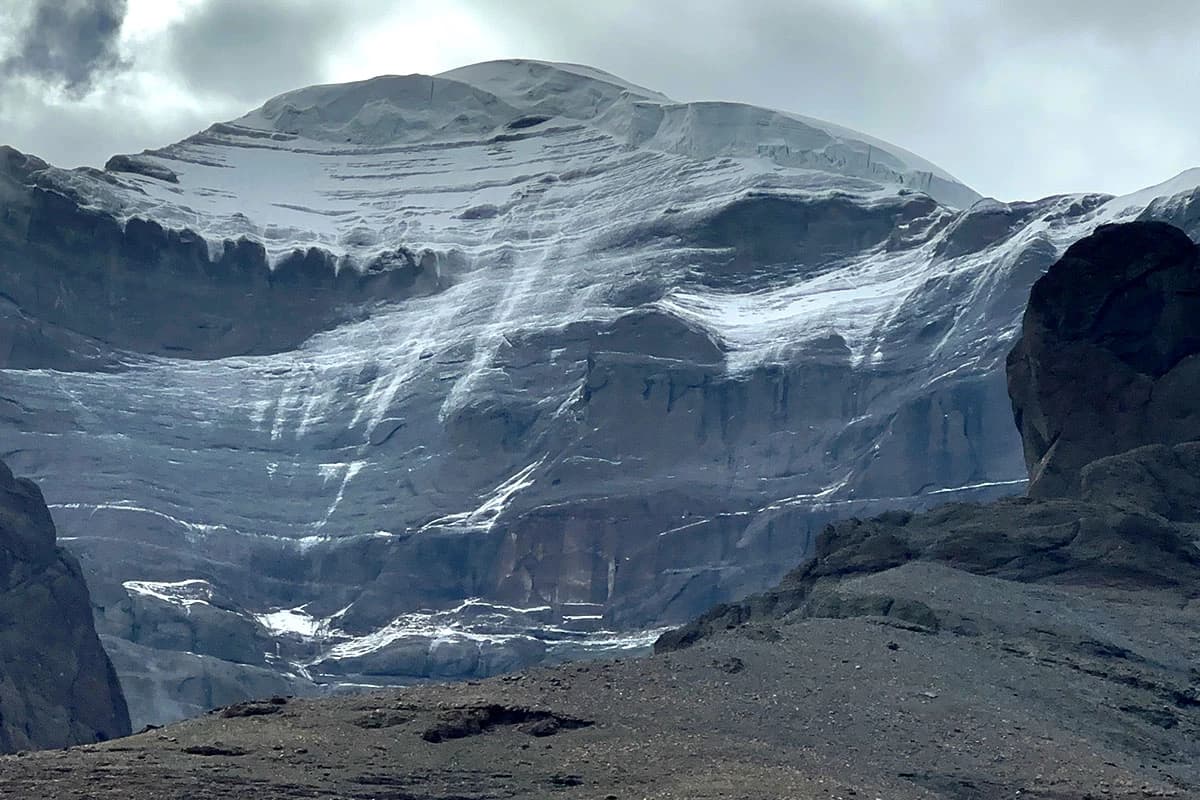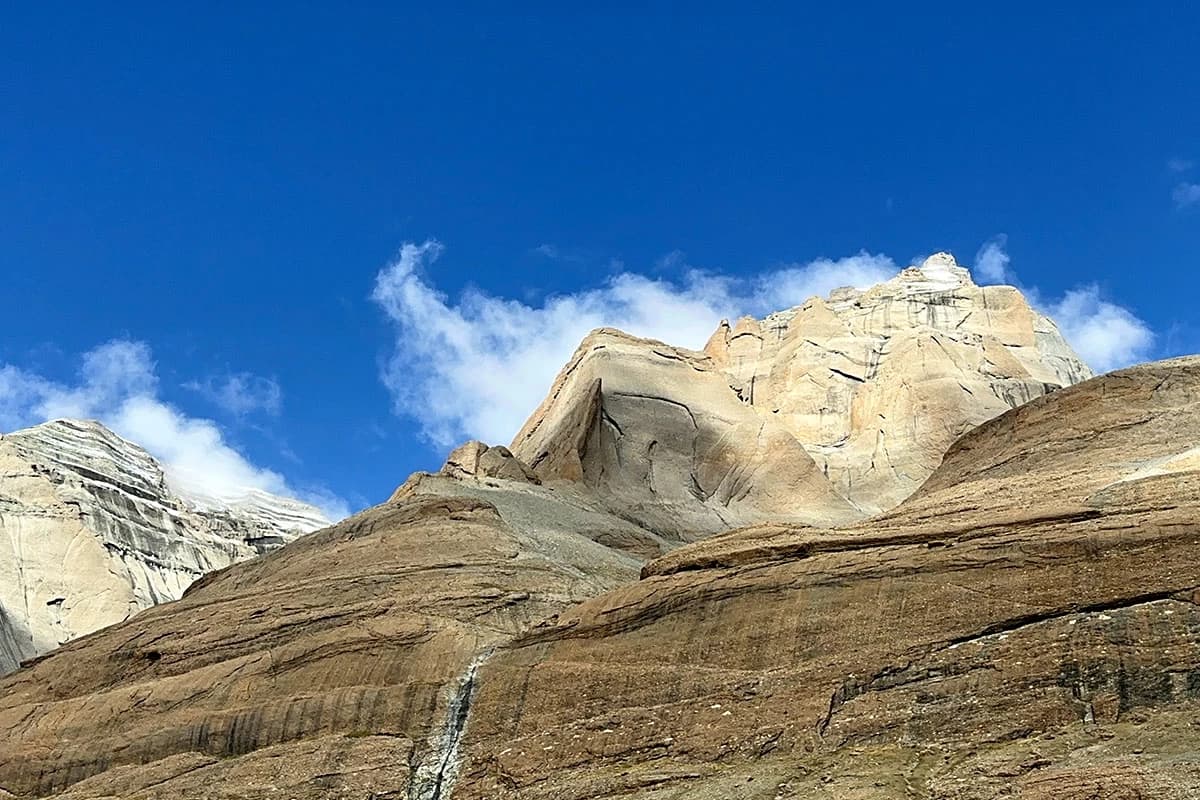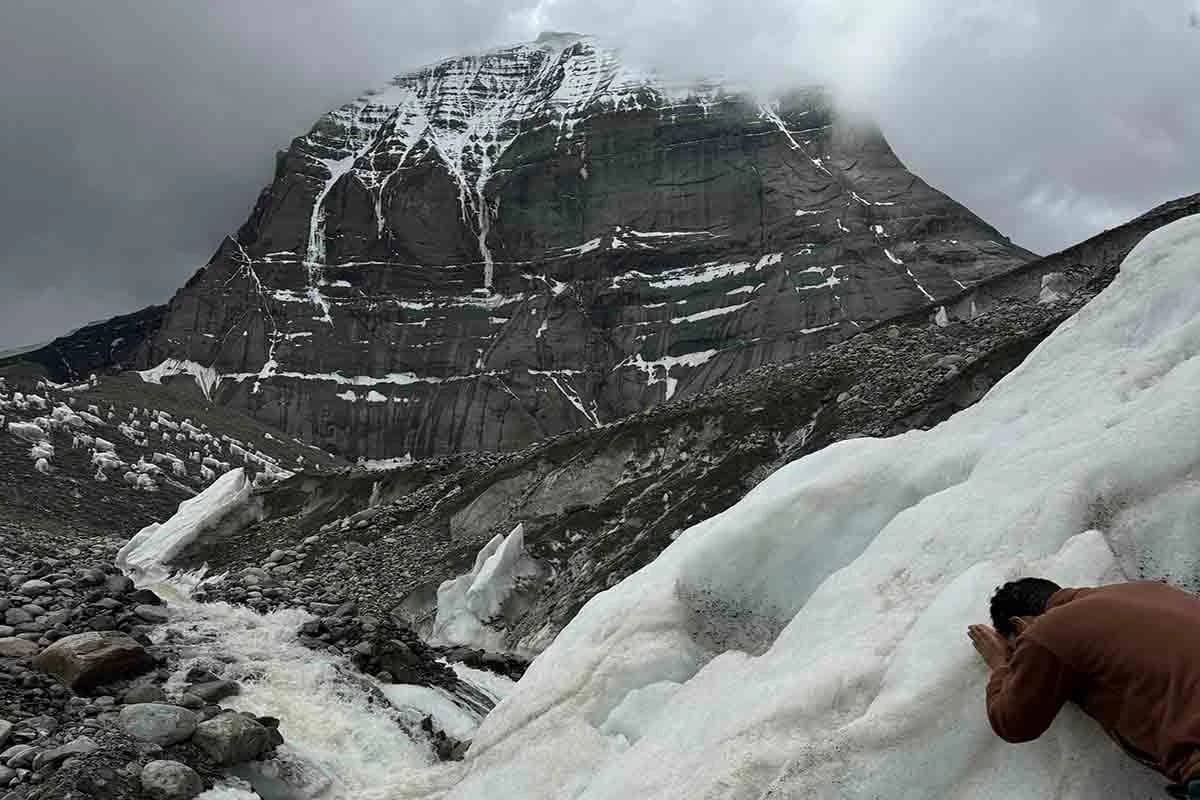Mount Kailash Charan Sparsha Tour is a part of Kailash Inner walk, one of the most sacred tours in the world for Hinduism, Buddhism, Jainism, and Bon religions. It is to walk up to the base of Mt Kailash from north side of Kailash face and touch its base. It is believed that lord Shiva used to reside in Mount Kailash. With that belief, people consider Mount Kailash to be one holy tour that they have to conquer once in their lifetime.
Since, there are no expeditions to climb the peak of Mount Kailash, people visit Mount Kailash as Mount Kailash Charan Sparsa Tour where Charan means “feet '' and Sparsh means “to touch”. So, the meaning behind Mount Kailash Charan Sparsha is to touch the feet of Mount Kailash and receive the more blessings and energy where lord Shiva had lived with his family.
Mount Kailash Charan Sparsha tour begins either from the capital of Nepal, Kathmandu to the Kerung Border or from Lhasa the capital of Tibet. The trek starts from Derapuk monastery which is located approximately around 7 kilometers from the sacred pilgrimage site valley of the God also called Yamadwar.
Furthermore, people also believe that, the holy river Ganges origins from the melted snow of Mount Kailash and Lake Mansarovar.
Best time to visit Kailash Charan Sparsha
Generally, the most favorable time to visit the Mount Kailash region during the dry seasons. Likewise, the best time to visit Mount Kailash Charan Sparsha is during mid-May to September when the mountain is visible clearly and the weather is generally pleasant. The walking path of Mt Kailash outer Kora and way to CHaransparsha is with less ice.
Well, if you are planning to visit Mount Kailash in the off season, after the end of September, you might not be blessed to clearly view the peak of Mount Kailash as the peak will be mostly covered by the clouds and the Mansarovar Lake will be covered by snow. Similary the trekking path may with full of ice and local government may not allow to go further more from Kailash base camp.
Also, during the off season, you might find it difficult to get the help of locals as the local lodges might be out of service.
Moreover, trekking during the off-season or winter season will be much harder than trekking during the time between May to September.


